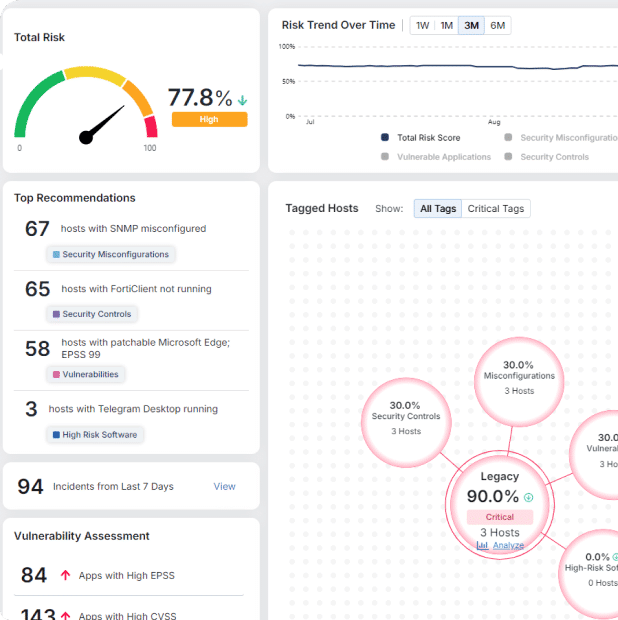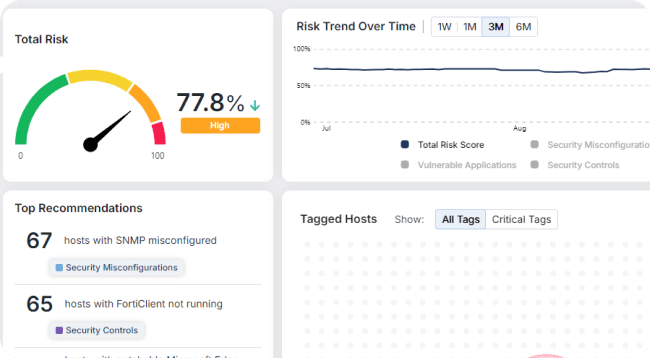The Future of Ransomware Defense: Why AI and Prevention-First Cybersecurity Are Critical for Insurers and Cyber Policyholders

The ransomware landscape now is unlike anything we’ve seen before.
Attackers have become smarter, faster, and more adaptable, leveraging AI-driven tools to bypass traditional defenses and exploit vulnerabilities with precision. For insurers and cyber insurance policyholders, the stakes couldn’t be higher. The average ransomware payment surged to $1.13 million in Q2 2025, with two-thirds of payments resulting from failed backups (Morphisec Research).
As the CMO of Morphisec, a leader in prevention-first cybersecurity, I’ve seen firsthand how AI is not just changing the game but rewriting the rules entirely. Insurers and policyholders must now act with urgency, adopting future-ready security measures that go beyond detection and response. This blog explores the challenges AI-driven ransomware presents and why prevention-first strategies are the key to staying ahead.
The AI-Driven Ransomware Era: A New Frontier of Risk
Artificial intelligence has introduced a new level of complexity and uncertainty to the ransomware landscape.
Attackers are now using AI to:
- Generate hyper-targeted phishing campaigns: AI eliminates language barriers and creates highly convincing social engineering attacks, making initial access easier.
- Exploit vulnerabilities in real time: AI-driven ransomware like PromptLock dynamically adapts to bypass traditional defenses, introducing unpredictable encryption orders and exfiltration tactics.
- Amplify vulnerabilities in AI-assisted code: AI tools accelerate software development but often embed flaws from training on vulnerable datasets, creating new opportunities for attackers (Veracode Study).
For insurers, these advancements make it increasingly difficult to predict and manage risk. For policyholders, relying on outdated detection-based tools like Managed Detection and Response and Endpoint Detection and Response is no longer viable on its own.
Insurers Face a Perfect Storm of Uncertainty
The impact of AI-driven ransomware on the insurance industry is profound:
- Rising Claims and Payouts: Ransomware now accounts for 38% of financial losses from cyber events (Cyentia Institute), and the average ransom payment continues to climb. Insurers are tightening underwriting criteria, demanding advanced security measures to reduce claims.
- Evolving Threats: Silent ransom campaigns, such as those by the Silent Ransom Group, bypass encryption entirely, focusing instead on data exfiltration and extortion (Morphisec Research).
- Pressure on Policyholders: Insurers are mandating prevention-first defenses, such as real-time virtual patching and deception-based endpoint protection, as prerequisites for coverage.
This perfect storm has left insurers and policyholders grappling with how to adapt to these rapidly evolving challenges.
Why Prevention-First Strategies Are the Future
The traditional approach of relying on detection and response tools is no longer enough. AI-driven ransomware operates faster than reactive tools like MDR and EDR can respond, leaving organizations exposed. To truly mitigate risk, prevention must become the foundation of every cybersecurity strategy.
Here’s why prevention-first strategies are essential:
- Stopping Attacks Before Execution: Prevention-first solutions like Morphisec neutralize threats at the pre-execution stage, blocking ransomware and AI-driven malware before they can cause damage.
- Mitigating Backup Failures: With two-thirds of ransomware payments caused by failed backups, prevention-first tools ensure that data remains secure and accessible without relying solely on recovery mechanisms.
- Reducing Insurers’ Exposure: By preventing attacks outright, policyholders reduce claims frequency and severity, enabling insurers to offer more sustainable coverage options.
- Addressing Silent Ransom Campaigns: Prevention-first strategies protect against exfiltration and extortion tactics by isolating sensitive data and blocking unauthorized access.
Morphisec: Future-Ready Solutions for a New Era of Risk
At Morphisec, we’re redefining what it means to be future-ready in cybersecurity. Our prevention-first approach combines advanced deception and real-time virtual patching to protect organizations from even the most sophisticated threats.
Here’s how we’re helping insurers and cyber policyholders navigate the AI-driven ransomware era:
- Dynamic Endpoint Protection: Our solutions create constantly shifting attack surfaces, making it impossible for AI-powered ransomware to adapt and execute.
- Immediate ROI for Policyholders: By eliminating threats before they execute, Morphisec reduces downtime, ransom payments, and recovery costs, delivering tangible ROI.
- Meeting Insurer Expectations: Our technologies help policyholders comply with evolving insurer requirements, ensuring better coverage terms and lower premiums.
Urgency Is the Key to Survival
The rise of AI has accelerated the threat landscape, making prevention-first cybersecurity an immediate necessity. For insurers, it’s about ensuring the sustainability of their programs. For policyholders, it’s about protecting their business, reputation, and bottom line.
Morphisec is uniquely positioned to help organizations stay ahead of these challenges by delivering future-ready solutions that stop ransomware and AI-driven threats before they start. The time to act is now.
AI-driven ransomware represents an existential threat to businesses and a critical challenge for insurers. The only viable path forward is a shift to proactive, prevention-first cybersecurity strategies. At Morphisec, we’re not just preparing for the future; we’re shaping it.
Stay up-to-date
Get the latest resources, news, and threat research delivered to your inbox.



















